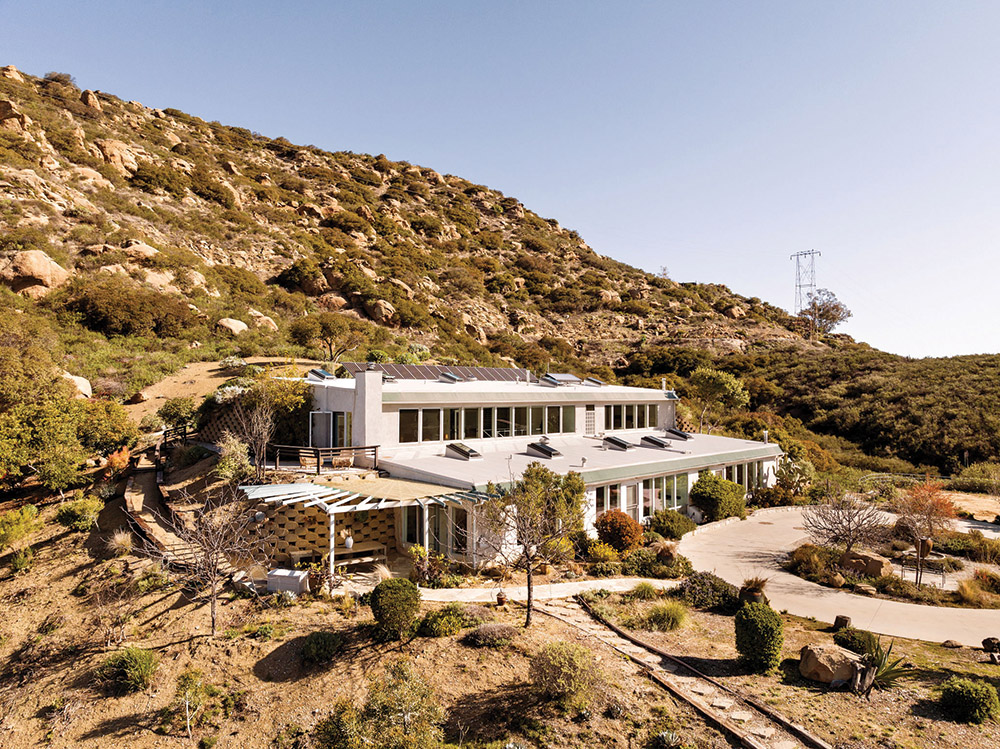Cutting-edge technology was once a de rigueur residential amenity for any eight-figure listing, along with elaborate home gyms, zero-edge swimming pools and 12-car garages. It’s becoming nearly impossible to find a fridge, toaster or LED light that isn’t Wi-Fi-enabled or voice-activated. But the fully loaded tech compound is suddenly falling from favor as high-end homeowners frantically reset the password to escape the $100 billion home-automation industry.
“Just like the arts-and-crafts movement was a reaction against industrialization, we’re now experiencing a reaction against the smart home. People are looking for more manual, less complicated places to live,” says interior designer Jamie Bush, who has worked on some of Los Angeles’ most iconic architectural residences for studio heads, celebrities and tech titans.
While celebrities like Sofía Vergara were once the smart home’s most vocal advocates — the Modern Family actress gushed about how she controlled her home’s security, appliance and media systems from her phone — the honeymoon period with digital domiciles is now facing the reality of unintelligible interfaces, endless updates and forgotten passwords.
“They could not find a single light switch in the entire home,” says Beverly Hills-based interior designer Carrie Livingston about a sprawling penthouse she was hired to renovate. Her clients had inherited the previous owner’s Crestron automation system, which controlled all overhead, wall and table lighting in response to movement within rooms. “The wife complained that every time she got up at night, her husband would see her path illuminated as she made her way from bed to bathroom,” says Livingston, who has worked with clients including Ralph Lauren, Gwyneth Paltrow and Dasha Zhukova. “Other times, she’d enter a darkened room where the lights wouldn’t go on no matter how much she flapped her arms.” Result: Livingston took out the entire system and installed manual switches throughout, an intricate overhaul that cost more than $100,000. Similarly, Bush recounts a recent renovation involving “a kitchen with a built-in dining table that rises and lowers from counter to dining height with hydraulics. But to do so, you need a passcode. Otherwise, the table will not move.”

This low-tech, off-the-grid, 3,600-square-foot San Fernando Valley home, listed at $2.7 million, features a fire-resistant roof and windows as well as skylights and earth-bermed walls that allow it to heat and cool itself naturally.
Courtesy
Enter the dumb home. “We’ve witnessed a surge in interest for low-tech and no-tech homes,” says Compass real estate agent Matt Witek. “Buyers are seeking homes that offer self-sufficiency, resilience and a retreat from tech-driven lifestyles.” Among his current listings is an off-the-grid newly built Los Angeles home that ditches all smart systems in favor of strategic solar alignment for passive heating and cooling as well as earth-bermed walls for natural temperature regulation. Low-tech, non-automated features also have become a selling point among storied Hollywood homes such as a newly listed, $14.5 million Santa Monica Canyon compound featuring a two-story guest house that was once an original barn from the Leo Carrillo estate.
Some of the biggest proponents of the non-digital home are leaders of tech companies themselves. One of Livingston’s recent projects for the former president of CrowdStrike’s head of global sales wanted as little technology at home as possible for his blended family with six children. She designed a media room loaded with books, board games and a vintage Corvette that she converted into a pool table. “Making the space less digital and more tactile helped to ensure that the family would actually gather there and use it.”
The shift is inspiring a renewed hunger for pre-internet home fixtures. Hyper-niche firms like U.K.-based Forbes & Lomax, which designs and manufactures historically accurate manual switch plates for upward of $800 each, have become modern-day design darlings. “Clients want an actual button that toggles, so that you feel the click,” says Bush.
Homebuyers increasingly seek a refuge from digital overload. “Once upon a time, attracting a high-end buyer meant flat-screens in almost every room, including outdoor areas. In today’s overly automated market, however, too much tech can be a massive turnoff,” says Pacific Sotheby’s real estate agent Gillian Flynn, who recently sold a 1912 Craftsman cottage in Cardiff-by-the Sea, a quiet beach town in North County San Diego that has attracted homeowners like Emily Ratajkowski, Switchfoot’s Jon Foreman and pro surfer Rob Machado. “We staged the home with zero TVs. Right now, the very top of the market values things like outdoor showers, sunset views and original architectural elements, not voice-activated AC systems,” says Bush. “In building a home, we always look at something that’s going to last beyond us — not that is going to become technically obsolete in seven years.”
This story appeared in the April 2 issue of The Hollywood Reporter magazine. Click here to subscribe.
